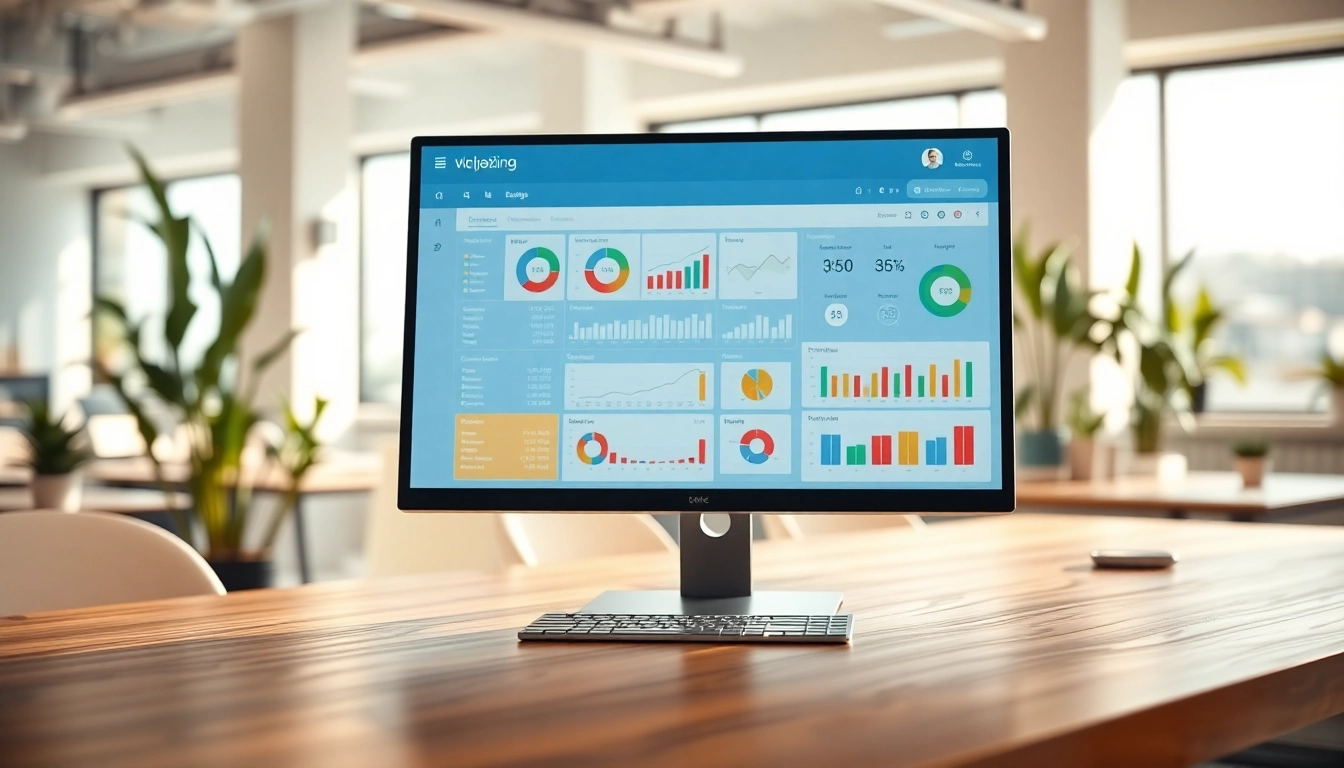Understanding the Budget Visualizer Basics
What is a Budget Visualizer?
A budget visualizer is essentially a tool that allows individuals and organizations to view, monitor, and manage their financial resources through a visual interface. These tools range from simple spreadsheets to complex applications that provide dynamic graphs and charts representing income, expenses, and savings over time. Users can input financial data, and the software visualizes this information, making it easier to grasp financial health at a glance.
The Importance of Budget Visualizers in Personal Finance
In today’s fast-paced world, effective financial management is crucial. A budget visualizer offers several benefits that make it a valuable asset in personal finance. Firstly, it simplifies complex financial data into easy-to-understand visuals that enhance comprehension. This clarity helps users identify spending patterns, prioritize savings, and ultimately make informed financial decisions. Furthermore, a budget visualizer promotes accountability by allowing users to track their expenses against their set budget, thereby encouraging better financial habits.
Basic Features of Budget Visualizers
Budget visualizers come with a variety of features designed to aid users in their financial planning. Common features include:
- Data Input: Users can manually enter income and expenses or import them from bank statements or financial accounts.
- Visual Charts and Graphs: The tool generates visual representations of financial data for quick interpretation.
- Customizable Categories: Individuals can set their own categories for income and expenses, tailoring the visualizer to fit their lifestyle.
- Alerts and Notifications: Many budget visualizers include features that remind users of upcoming bills or overspending in certain categories.
- Reporting Tools: Users can generate reports to analyze their financial progress over specified periods, enhancing decision-making.
How to Choose the Right Budget Visualizer
Key Features to Look For
Selecting a suitable budget visualizer is key to successful financial management. Here are important features to consider:
- User Interface: The application should be user-friendly and easily navigable.
- Integration: Compatibility with other personal finance tools or financial institutions can save you time and ensure accuracy.
- Mobile Accessibility: A budget visualizer that is accessible on mobile devices allows for on-the-go tracking.
- Customization: The ability to tailor graphs and reports to fit individual preferences enhances utility.
- Security: Ensure that the tool uses high-level encryption to protect personal financial information.
Comparing Budget Visualizers: Pros and Cons
When evaluating different budget visualizers, it’s important to weigh the advantages and disadvantages:
Pros:
- Clarity: Visual representation of finances can illuminate trends that might be missed in a text-heavy format.
- Motivation: Seeing visual progress towards financial goals can serve as motivation to maintain discipline.
Cons:
- Cost: Some budget visualizers may come with a subscription fee that could be a deterrent for budget-conscious individuals.
- Complexity: Advanced tools may be intimidating for users who prefer straightforward budgeting methods.
User Reviews and Ratings
One of the best ways to gauge the effectiveness of a budget visualizer is by examining user reviews and ratings. Look for feedback about user experiences on various platforms. Pay attention to comments about usability, customer support, and any potential issues users may have encountered. This crowd-sourced input can provide essential insights that help in making an informed choice.
Implementing a Budget Visualizer in Your Financial Planning
Setting Up Your Budget Visualizer
The initial setup of your budget visualizer is critical to its success. Begin by gathering all relevant financial data, such as income sources, expenses, and investments. Input this data systematically into the budget visualizer. Most tools will allow you to organize this information categorically, aligning it with your financial goals.
Creating Effective Budgeting Categories
Creating well-defined budgeting categories is crucial. Start with broad categories like housing, transport, food, and savings, and then break these down into subcategories for more detail. This granularity allows for effective tracking and helps identify areas where adjustments can be made. For example, within the food category, subcategories could include groceries, dining out, and snacks.
Common Mistakes to Avoid
In your journey towards effective financial management, it’s essential to avoid common pitfalls that can hinder progress:
- Overcomplicating Categories: Keeping categories too complex can make tracking difficult. Aim for a balance between granularity and simplicity.
- Neglecting Accurate Data Input: Ensure all financial entries are accurate to maintain a true reflection of your financial situation.
- Forgetting to Review Regularly: Commitment to regular reviews is essential for making necessary adjustments to your budget.
- Ignoring Financial Goals: Without clear financial goals, it becomes challenging to measure success or stay motivated.
Maximizing the Use of Your Budget Visualizer
Advanced Features for Enhanced Financial Tracking
To maximize the benefits of your budget visualizer, make use of advanced features that some tools offer. These could include:
- Predictive Algorithms: Some budget visualizers can suggest future financial patterns based on historical data, helping users plan ahead.
- Collaboration Features: Invite family members or financial advisors to collaborate, thereby enhancing transparency in financial planning.
- Investment Tracking: Managing investments alongside budgets can provide a holistic view of your financial landscape.
Customizing Your Budget Visualizer Experience
Customization can significantly improve your experience with a budget visualizer. Tailor dashboards, select preferred graphs, and set default categories that reflect your unique financial situation. Some tools also allow you to set visual themes that can make the budgeting experience more enjoyable.
Integrating Other Tools with Your Budget Visualizer
For optimal financial management, consider integrating your budget visualizer with other tools and resources. This may include:
- Banking Apps: Direct integration with your bank can automate data input, ensuring real-time updates.
- Expense Tracker Apps: Use dedicated expense apps alongside your budget visualizer to enhance tracking accuracy.
- Financial Planning Software: Integration with comprehensive financial tools can provide deeper insights into long-term planning.
Measuring Success with Your Budget Visualizer
Key Performance Metrics to Track
To gauge the effectiveness of your budget visualizer, it is important to measure specific performance metrics. Key indicators include:
- Spend vs. Budget: Track how your actual spending compares to your budget goals.
- Savings Rate: Monitor how much you’re saving relative to your income, aiming for a higher percentage over time.
- Expense Trends: Analyze changes in spending across categories to identify areas for improvement.
Adjusting Your Budget Based on Insights
Regularly reviewing your financial data will provide insights that inform necessary adjustments. If certain categories consistently exceed budgeted amounts, it may be time to revisit spending habits or increase funding in those areas. Moreover, adjusting for seasonal expenses, such as holidays or vacations, can ensure ongoing accuracy in budgeting.
Long-Term Financial Planning and Budget Visualizers
A budget visualizer plays a vital role not just in short-term budgeting, but also in long-term financial planning. Users can create projections based on future income, forecast expenses, and plan for significant life events, such as buying a home or saving for retirement. By maintaining a focus on long-term goals, individuals can ensure that their financial decisions align with their overarching life goals.



